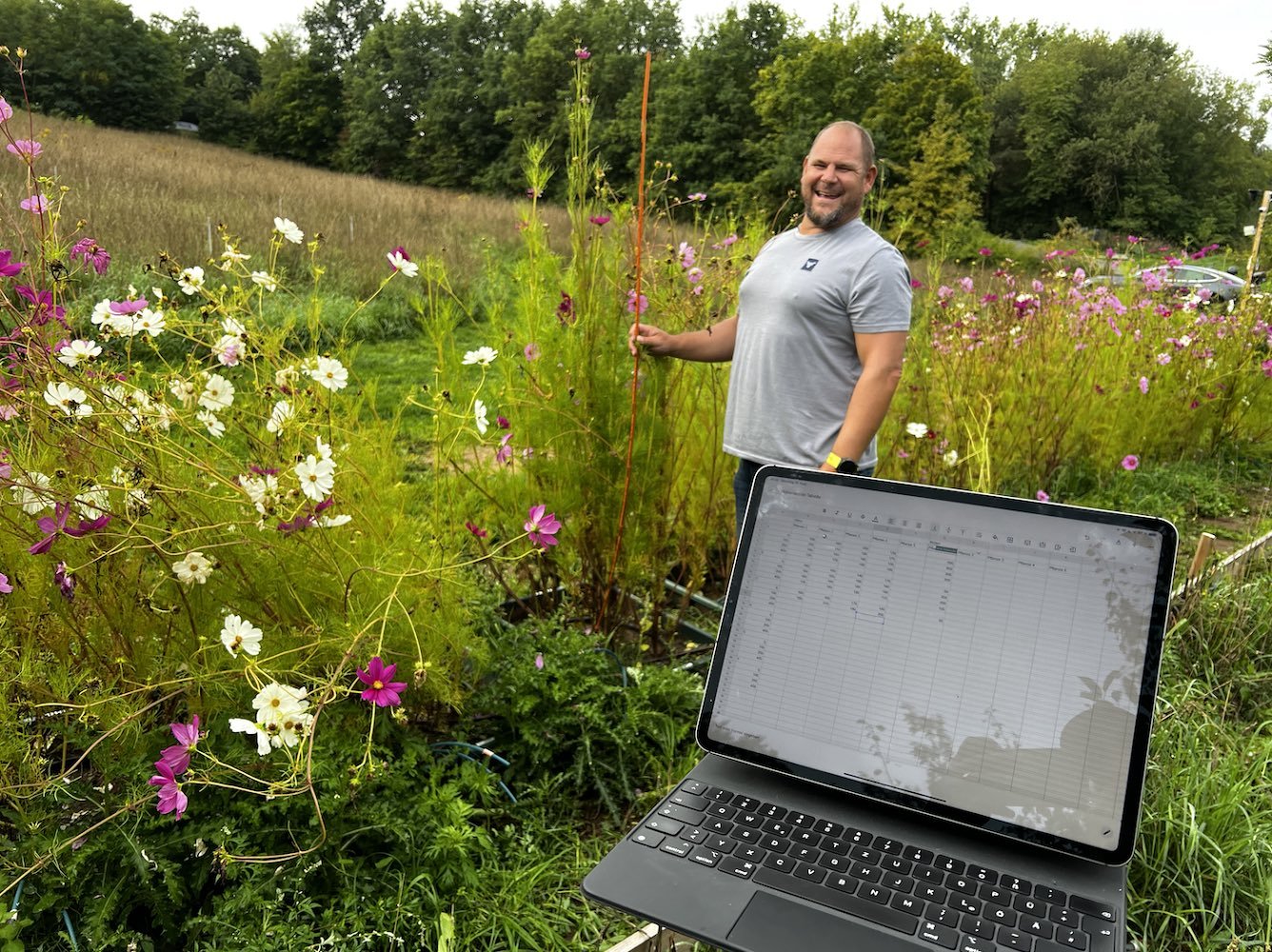Biomass Assessment of Weathering in the XXL Lysimeters
For the XXL lysimeter experiment we planted 80 cosmea plants into our 20 lysimeters in spring. Now, at the end of the season, we wanted to know: what effect does the basalt have on the cosmeas‘ plant growth?
So we did some measurements!
We measured the height of each plant and we counted/estimated the number of blossoms per pot. We wanted to find out if adding 0, 100, 200, or 400 t/ha of basalt would have an effect on our Cosmea plants.
Planet heights: Let's start with the height of each plant, sorted by basalt amount: It's visible that there's not a strong difference between the variations (0=control, 100/200/400 t/ha of coarse basalt or fine basalt with 200 t/ha).
Blossoms per Pot: Here we can see, the 0 t/ha replicates have fewest blossoms, some close to zero, while most treated pots have more blossoms than control. The increase in blossoms is likely caused by the phosphor brought in by the basalt.
Adding 200 t/ha of fine or coarse basalt doesn't seem to make a big difference. More than 100 t/ha seems to lower the number of blossoms compared to 100 t/ha (some kind of overloading).
So, adding a not too crazy amount of basalt seems to improve the blossoms. But there is no significant effect on plant growth by basalt amount, at least not in this measurement in our sandy soil in Fürth.
Finally we took down the plants to make space for some further experiments on the pots. Looks a bit sad now. Summer is over. 😢
Update January 2025: Even after three years we can’t measure a substantial increase in weathering signals in the treated pots compared to the controls. See our January 2025 paper.






